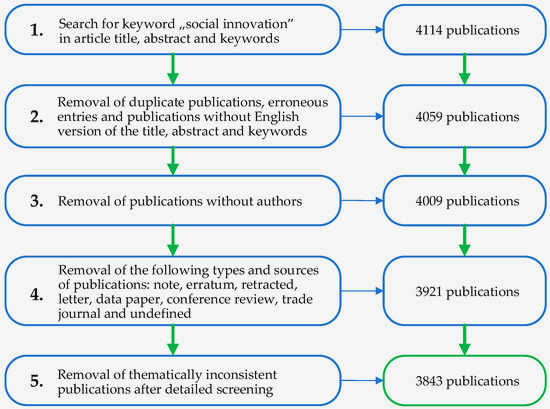Charitable giving plays a vital role in the development and maintenance of a thriving civil society. Whether it’s individuals, corporations, or foundations, philanthropy has the power to bring about positive change and address the social, economic, and environmental challenges we face today. This comprehensive guide aims to explore the impact of charitable giving on civil society, examining how it supports and strengthens various sectors and communities.
One of the key benefits of charitable giving is its ability to address critical social issues. Non-profit organizations and charities often focus their efforts on vulnerable populations, such as the homeless, children in need, and those facing food insecurity. By providing financial support, resources, and services, philanthropy helps to bridge the gap and improve the overall well-being of these individuals and communities in need.
Not only does charitable giving address immediate needs, but it also has a long-term impact on civil society. By investing in education, healthcare, and other essential services, philanthropy helps to create a more inclusive and equitable society. It supports the development of future leaders, empowers marginalized communities, and promotes economic growth. Furthermore, charitable giving often leads to the formation of partnerships and collaborations between different stakeholders, fostering a sense of unity and shared purpose.

Understanding the Importance of Charitable Giving
Charitable giving plays a crucial role in supporting civil society and addressing various pressing social issues. Through charitable contributions, individuals and organizations can make a positive impact on the lives of others and promote positive change in communities. Whether it’s donating money, goods, or time, charitable giving provides a means for individuals to actively participate in improving the well-being of others.
Empowering Change
Charitable giving empowers individuals and communities to create meaningful change. By supporting charitable organizations and causes, individuals can address a wide range of issues, from education and healthcare to poverty alleviation and environmental sustainability. These contributions help fund programs and initiatives that make a difference and create opportunities for positive transformation.
Fostering Collaboration
Charitable giving also fosters collaboration among different stakeholders, including individuals, nonprofit organizations, businesses, and governments. Through partnerships and collective efforts, charitable initiatives can have a greater impact and reach more people. By pooling resources and expertise, organizations and individuals can work together to address complex social challenges and create lasting change.
Building Stronger Communities
Charitable giving plays a vital role in building stronger, more resilient communities. By supporting local organizations and initiatives, individuals can contribute to the well-being of their own communities and improve the quality of life for their neighbors. Charitable giving can help address social inequalities, enhance access to essential services, and promote social cohesion.
Cultivating Empathy and Generosity
Engaging in charitable giving cultivates empathy and fosters a sense of generosity. It encourages individuals to develop a deeper understanding of the challenges faced by others and provides an opportunity to support those in need. By giving back, individuals can contribute to creating a more compassionate and equitable society.
Driving Social Innovation
Charitable giving plays a critical role in driving social innovation. By supporting innovative ideas and projects, individuals and organizations can foster new approaches to addressing social issues and improving the effectiveness of interventions. Through strategic philanthropy, charitable giving can catalyze positive change and contribute to the development of sustainable solutions.
Conclusion
Understanding the importance of charitable giving is key to realizing its potential impact on civil society. It is through such giving that individuals and organizations can empower change, foster collaboration, build stronger communities, cultivate empathy and generosity, and drive social innovation. By actively participating in charitable giving, individuals can make a significant difference in the lives of others and contribute to a better and more equitable society.
Historical Perspectives on Civil Society
Civil society is a concept that has evolved over time and has been shaped by various historical events and ideas. Understanding the historical perspectives on civil society is crucial in exploring its impact.
One of the earliest philosophers to discuss civil society was Aristotle, who believed that it was an essential component of a well-functioning state. He argued that civil society is made up of voluntary associations and organizations that enable individuals to pursue common interests and contribute to the overall welfare of society.
In the 18th century, during the Enlightenment period, thinkers like Adam Ferguson and Alexis de Tocqueville further developed the idea of civil society. They emphasized the importance of active citizen participation, social cohesion, and the existence of independent institutions outside of the state and the market.

The concept of civil society also played a significant role in the socio-political movements of the 19th and 20th centuries. The rise of labor unions, women’s suffrage movements, and civil rights movements demonstrated the power of organized groups in advocating for social and political change.
Today, civil society continues to evolve in response to contemporary challenges and opportunities. Globalization, technological advancements, and changing socio-political landscapes are shaping the way civil society operates and influences society at large.
Examining the Role of Nonprofit Organizations
Nonprofit organizations play a crucial role in supporting civil society and addressing social and environmental issues. These organizations are driven by a mission to serve the public good, rather than generating profits for shareholders. They operate in various sectors, such as education, healthcare, poverty alleviation, and environmental conservation.
One key role of nonprofit organizations is to fill gaps in government services and address unmet needs in society. They often work in areas where the government may lack the resources, capacity, or mandate to fully address the issue. For example, nonprofit organizations may provide support to marginalized communities, advocate for policy change, or deliver essential services to vulnerable populations.
Nonprofit organizations also serve as a catalyst for social innovation and change. They have the flexibility to experiment with new approaches and initiatives, which can lead to transformative solutions to societal challenges. These organizations bring together diverse stakeholders, including individuals, businesses, and government agencies, to collaborate and drive collective action.
Furthermore, nonprofit organizations play a pivotal role in promoting civic engagement and fostering a sense of community. They provide opportunities for individuals to become actively involved in addressing issues they care about through volunteering, donating, or advocating for change. By connecting people with shared interests and values, nonprofits help build social capital and strengthen civil society.
Nonprofit organizations rely heavily on charitable giving to fund their operations and programs. Donations from individuals, foundations, corporations, and government grants are critical for their sustainability. Charitable giving supports nonprofits in expanding their reach, improving their services, and achieving their mission. It also empowers individuals to have a direct impact on the causes they care about, encouraging a culture of philanthropy and active citizenship.
In conclusion, nonprofit organizations play a multifaceted role in civil society. They address unmet needs, drive social innovation, promote civic engagement, and rely on charitable giving to fulfill their mission. By understanding and supporting the role of nonprofit organizations, we can collectively work towards a more equitable, just, and sustainable society.
Key Factors that Influence Charitable Giving
Economic Conditions
Economic conditions play a significant role in influencing charitable giving. During times of economic prosperity, individuals and corporations often have more disposable income, allowing them to donate more to charitable causes. Conversely, during economic downturns, individuals may experience financial constraints and be less able to contribute to charitable organizations.
Personal Values and Beliefs
Personal values and beliefs are important factors that influence charitable giving. Individuals who hold strong convictions about issues such as poverty, education, or healthcare may feel compelled to support organizations that address these issues. Their personal values and beliefs guide their decision-making process and drive their desire to make a difference in these areas.
Peer Influence
Peer influence can be a powerful factor in shaping charitable giving behavior. When individuals see their friends, family members, or colleagues engaging in philanthropic activities, they may be more likely to follow suit. People are often influenced by observing others’ altruistic behavior, which can create a social norm of giving within a particular social circle or community.
Transparency and Accountability
The transparency and accountability of charitable organizations can significantly impact individuals’ decision to donate. Donors want to ensure that their contributions will be used effectively and efficiently to achieve the intended impact. Organizations that have a track record of financial transparency and demonstrate accountability are more likely to attract donors who value these traits.
Personal Connection
A personal connection to a cause or organization can greatly influence charitable giving. When individuals have firsthand experience or a personal connection with a particular issue, they are more likely to donate to organizations working to address that issue. This emotional connection can create a strong motivation to give and contribute to the growth of civil society.
Tax Incentives
Tax incentives can be a significant factor that influences charitable giving. Governments often provide tax deductions or credits for donations to registered charitable organizations. These incentives can serve as a motivator for individuals and corporations to give more generously as they can benefit from reduced tax liabilities.
While these are some key factors that influence charitable giving, it is important to note that individual motivations and preferences may vary. Understanding these factors and identifying the specific drivers of giving can help organizations and policymakers create strategies to encourage and support charitable giving in civil society.
Exploring the Benefits of Giving to Civil Society
1. Strengthening Communities
One of the key benefits of giving to civil society is the opportunity to strengthen communities. When individuals and organizations contribute to charitable causes, they are investing in the well-being of their communities. This support can help address various social issues, such as poverty, education, and healthcare, and ultimately enhance the overall quality of life in the community.
2. Promoting Social Justice
Giving to civil society can also play a crucial role in promoting social justice. By supporting organizations that work towards equality and fairness, individuals can contribute to creating a more just society. This can involve funding initiatives that address systemic discrimination, advocating for human rights, and supporting marginalized communities.
3. Fostering Innovation and Progress
Charitable giving to civil society can foster innovation and progress. By investing in research and development, individuals and organizations can support initiatives that drive positive change. This can include funding scientific research, supporting technological advancements, and encouraging innovative approaches to social, economic, and environmental challenges.
4. Empowering Individuals and Groups
Giving to civil society can empower individuals and groups, providing them with the resources and opportunities they need to thrive. Whether it’s funding educational programs, supporting entrepreneurship, or providing access to healthcare and social services, charitable giving can help bridge gaps and empower individuals to reach their full potential.
5. Building a Sense of Solidarity
Engaging in charitable giving to civil society can help build a sense of solidarity among individuals and communities. By coming together to address common issues and support shared causes, people can develop a stronger sense of belonging and unity. This can foster collaboration, cooperation, and collective action, leading to more resilient and inclusive societies.
In summary, giving to civil society offers a range of benefits, from strengthening communities and promoting social justice to fostering innovation and empowering individuals. By supporting charitable causes, individuals and organizations can contribute to positive societal change and create a better future for all.
Challenges in Measuring the Impact of Charitable Giving
Lack of standardized measurement methods
One of the main challenges in measuring the impact of charitable giving is the lack of standardized measurement methods. Different charities may use different metrics and indicators to assess their impact, making it difficult to compare and evaluate the effectiveness of their programs. Without a standardized approach, it becomes challenging to effectively measure the long-term outcomes and overall impact of charitable giving on civil society.
Complexity of social issues
Another challenge is the complexity of the social issues that charitable giving aims to address. Many societal problems, such as poverty, educational inequality, and healthcare disparities, have multiple underlying causes and factors. These issues are often deeply rooted and interconnected, making it challenging to attribute the impact of charitable giving to a specific intervention or program. The multifaceted nature of these issues makes it difficult to accurately measure the direct impact of charitable giving on civil society.
Limited resources for evaluation
Measuring the impact of charitable giving requires resources for evaluation, including data collection, analysis, and reporting. Many charities, particularly smaller or grassroots organizations, may have limited resources available for these activities. Without adequate resources, it becomes challenging to collect and analyze data on the impact of charitable giving. This limitation makes it difficult to assess the effectiveness of charitable programs and understand their contribution to civil society.
Time lag for measuring long-term outcomes
Measuring the impact of charitable giving often requires evaluating long-term outcomes, such as changes in social attitudes, behavior, or systemic reforms. However, assessing these long-term outcomes can be challenging due to the time lag involved. It may take years or even decades to see the full effects of charitable interventions, making it difficult to assess their impact within shorter evaluation periods. The time lag for measuring long-term outcomes adds complexity to the evaluation process and makes it challenging to capture the full extent of the impact of charitable giving on civil society.
Varying stakeholder perspectives
Measuring the impact of charitable giving is further complicated by the varying perspectives of stakeholders involved. Different stakeholders, such as donors, beneficiaries, and community members, may have different priorities and expectations regarding the outcomes and impact of charitable giving. These diverse perspectives can make it challenging to develop a comprehensive evaluation framework that captures the perspectives and interests of all stakeholders. The varying stakeholder perspectives add complexity to the measurement process and require careful consideration to ensure a holistic understanding of the impact of charitable giving.
Tools and Strategies for Effective Giving
When it comes to charitable giving, there are various tools and strategies that can help individuals and organizations maximize the impact of their donations. These tools and strategies can ensure that the resources are utilized efficiently, reaching the intended beneficiaries and creating a real difference in society.
1. Research and Due Diligence
Before making a donation, conducting thorough research and due diligence is essential. This involves examining the mission, goals, and track record of the charity or organization to ensure their alignment with the donor’s values and objectives. It is also important to verify the organization’s financial transparency and accountability, as well as the impact of their programs.

2. Strategic Giving
Strategic giving involves taking a targeted approach to philanthropy by focusing on specific causes or issues. This allows donors to concentrate their resources and make a more significant impact in a particular area. By identifying key priorities, such as education, healthcare, or environmental preservation, donors can direct their giving towards organizations and projects that are addressing those issues effectively.
3. Collaborative Giving
Collaborative giving involves pooling resources with other donors to maximize impact. By partnering with like-minded individuals or organizations, donors can combine their funds, knowledge, and networks to support larger-scale projects and initiatives. This can lead to greater efficiency, increased leverage, and the ability to tackle complex social problems that require collective effort.
4. Donor-Advised Funds
Donor-advised funds (DAFs) are a popular tool for effective giving. DAFs are charitable giving accounts that allow donors to make contributions and receive immediate tax benefits, while retaining the ability to recommend grants to eligible charities over time. This provides donors with flexibility and control over their giving, allowing them to strategically allocate funds based on evolving priorities and needs.
5. Impact Measurement and Reporting
Measuring the impact of charitable giving is crucial for understanding its effectiveness and identifying areas of improvement. Donors can utilize various tools and metrics to assess outcomes and evaluate the success of funded projects. By demanding transparency and accountability from charities, donors can ensure that their contributions are making a tangible difference and driving positive change in civil society.
6. Planned Giving
Planned giving involves incorporating charitable donations into long-term financial and estate planning. By including charitable bequests, life insurance policies, or charitable remainder trusts in their estate plans, individuals can leave a lasting legacy and continue supporting causes they care about even after they are gone. This strategy allows donors to make a significant impact on civil society and create a lasting positive effect.
Overall, by utilizing these tools and strategies for effective giving, individuals and organizations can ensure that their charitable contributions have a meaningful impact and contribute to the betterment of civil society.
Collaborative Approaches to Strengthening Civil Society
Civil society plays a crucial role in shaping and maintaining a functioning democratic society. In order to effectively strengthen civil society, it is important to adopt collaborative approaches that encourage cooperation and collective action.
1. Partnerships between NGOs and Government
One approach to strengthening civil society is through partnerships between non-governmental organizations (NGOs) and government agencies. This collaboration can involve sharing resources, expertise, and decision-making power to address common goals and challenges. By working together, NGOs and government entities can leverage their respective strengths and create more impactful and sustainable solutions.
2. Multi-stakeholder Initiatives
Multi-stakeholder initiatives bring together various actors from civil society, government, businesses, and communities to address complex social issues. These initiatives create a platform for dialogue, collaboration, and joint problem-solving. By including a diverse range of perspectives and expertise, multi-stakeholder initiatives can generate innovative and inclusive solutions that are more likely to be embraced by the wider community.
3. Knowledge Exchange and Capacity Building
Collaborative approaches to strengthening civil society also involve knowledge exchange and capacity building activities. This may include workshops, trainings, and mentoring programs that aim to enhance the skills and capabilities of civil society organizations. By sharing best practices, lessons learned, and technical expertise, these initiatives can empower civil society organizations to become more effective and sustainable in their work.
4. Funding and Resource Sharing
Funding and resource sharing is another important aspect of collaborative approaches to strengthening civil society. By pooling financial resources, organizations can increase their collective impact and reach. Sharing resources such as office space, equipment, and technology can also help to reduce costs and improve efficiency. Additionally, collaborative funding mechanisms, such as pooled funds or co-funding arrangements, can provide more flexible and sustainable support to civil society organizations.
5. Advocacy and Networking
Advocacy and networking play a vital role in strengthening civil society by amplifying the voices and concerns of various stakeholders. Collaborative advocacy efforts can bring together different organizations and individuals, increasing their collective influence on policy development and implementation. Networking platforms, such as conferences, forums, and online communities, facilitate the exchange of ideas, promote learning, and foster collaboration among civil society actors.
By embracing collaborative approaches, we can effectively strengthen civil society and its ability to bring about positive social change. These approaches promote inclusivity, innovation, and collective action, ultimately contributing to the development of a more vibrant and resilient civil society.

Promoting Transparency and Accountability in Charitable Giving
Transparency and accountability are essential elements in promoting trust and confidence in the charitable giving sector. Donors want to ensure that their contributions are being used effectively and efficiently, and that the organizations they support are operating with integrity. By promoting transparency and accountability in charitable giving, we can strengthen the bond between donors and organizations, and foster a culture of responsible giving.
Transparency
Transparency involves sharing information about an organization’s mission, activities, and finances with its stakeholders, including donors, beneficiaries, and the public. This can be achieved by providing clear and accessible annual reports, financial statements, and impact assessments. By being transparent, organizations can demonstrate their commitment to openness and create a culture of trust and accountability.
Accountability
Accountability is the responsibility of charitable organizations to use their resources effectively, and to be answerable for their actions and decisions. This can be achieved through sound governance practices, such as having an independent board of directors, conducting regular audits, and adhering to industry standards and regulations. By holding themselves accountable, organizations can instill confidence in their donors and stakeholders, and ensure that their resources are used for maximum social impact.
To promote transparency and accountability in charitable giving, it is important for donors to do their due diligence before making a contribution. They should research organizations, review their financial statements, and assess their impact. Additionally, donors can support initiatives that advocate for transparency and accountability in the charitable sector, and use their influence to encourage organizations to adopt best practices.
In conclusion, promoting transparency and accountability in charitable giving is crucial for building and maintaining trust between donors and organizations. By providing clear information and being accountable for their actions, charitable organizations can demonstrate their commitment to their mission and the communities they serve. Donors play a vital role in promoting transparency and accountability by making informed decisions and supporting initiatives that encourage responsible practices in the sector.
The Future of Charitable Giving and its Impact on Civil Society
1. Changing Trends in Charitable Giving
As society and technology continue to evolve, so does the landscape of charitable giving. New trends are emerging that are reshaping the way people engage with and support charitable causes. For instance, there is a growing emphasis on strategic philanthropy, where donors are more focused on making a measurable impact with their donations. Additionally, the rise of social media has made it easier for individuals to raise awareness and funds for causes they care about, bypassing traditional fundraising channels.
2. Impact on Nonprofits and Civil Society Organizations
The changing landscape of charitable giving has both positive and negative implications for nonprofits and civil society organizations. On the positive side, the increased emphasis on strategic philanthropy means that organizations that can demonstrate their impact and effectiveness are more likely to attract funding. This creates a greater incentive for nonprofits to measure and communicate their outcomes. On the other hand, the rise of individual giving through social media can make it more difficult for established nonprofits to compete for donor attention and funding.
3. The Role of Technology in Charitable Giving
Technology is playing an increasingly important role in charitable giving. Online platforms and mobile apps have made it easier for individuals to donate to causes they care about, both locally and globally. Moreover, advancements in data analytics and artificial intelligence have the potential to transform the way charities operate. For example, nonprofits can leverage these technologies to analyze donor behavior, personalize fundraising appeals, and optimize their outreach efforts.
4. Challenges and Opportunities for Civil Society
While charitable giving presents many opportunities for civil society, it also faces challenges that need to be addressed. One such challenge is donor fatigue, where individuals become overwhelmed by the number of requests for donations they receive and may choose not to give at all. To overcome this, nonprofits and civil society organizations need to find innovative ways to engage donors and create meaningful connections. Moreover, ensuring transparency and accountability in the use of donations is crucial to maintain donor trust.
5. The Future of Giving
The future of charitable giving is likely to be driven by a combination of technological advancements, changing donor expectations, and evolving societal needs. Donors will increasingly seek out organizations that align with their values and offer a compelling narrative. Nonprofits and civil society organizations will need to adapt to these changing dynamics by adopting innovative fundraising strategies, leveraging technology, and demonstrating their impact. Ultimately, the future of charitable giving holds great potential to drive positive change and strengthen civil society.





